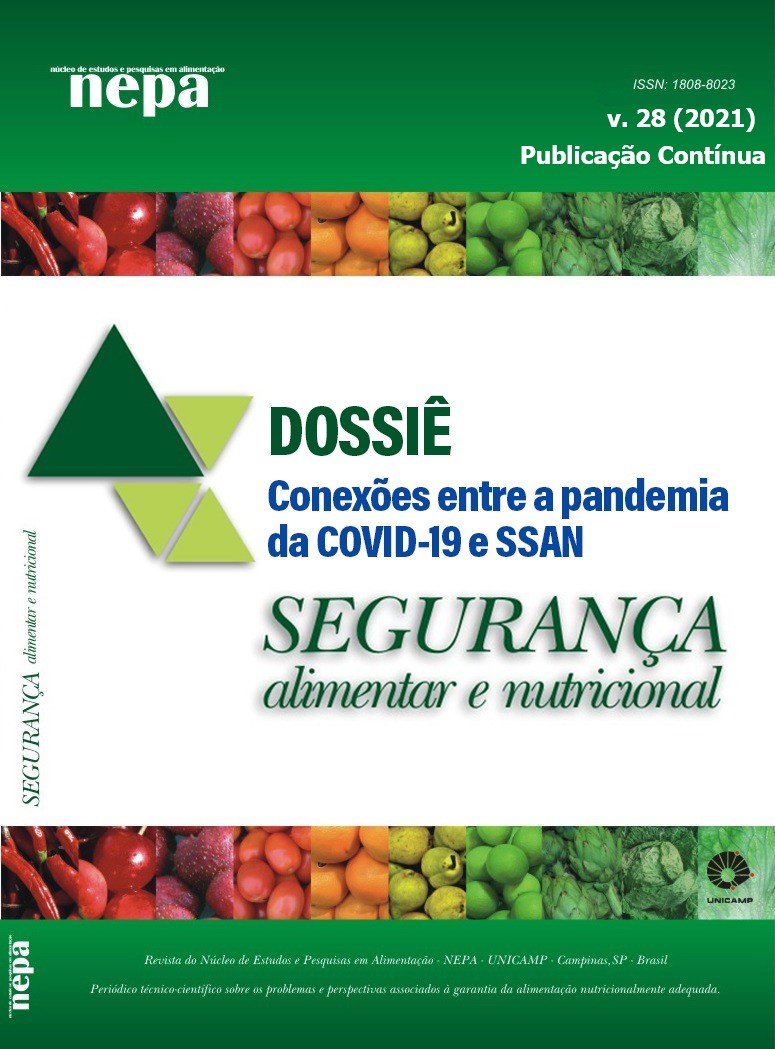Abstract
The Brazilian Institute of Geography and Statistics collected data for the application of the Brazilian Food Insecurity Scale in supplements of the National Household Sample Survey in 2004, 2009 and 2013. With the disclosure of the data obtained in the new Family Budget Survey (POF 2017-2018), researchers now have a series of four years of data on the subject throughout the Brazilian territory. Food insecurity decreased from 2004-2013, but grew in 2017-2018. Data indicate that severe food insecurity in 2017-2018 is higher than in 2013, but is below the value observed in 2009. However, food insecurity of any degree in 2017-2018 exceeds even the value observed in 2004. Analyzing data by Federation Unit shows the strong association of food insecurity with income distribution and particularly with poverty measures. It turns out, with data from the PNAD, that the level of poverty fell from 2003 to 2014 and, although it rose from 2014 to 2017-2018, in these years it is substantially below the value observed in 2004. It is argued that the great growth of light food insecurity from 2013 to 2017-2018 is largely due to the partially subjective nature of EBIA. In another section of the article, the microdata of the POF 2017-2018 are used to verify, through logit models, what are the main determinants of the probability of food insecurity in a household. The results show that increased income and schooling are basic instruments to reduce food insecurity and that more stable incomes have an additional beneficial effect.
References
IBGE. Pesquisa de orçamentos familiares 2017-2018: análise da segurança alimentar no Brasil. Rio de Janeiro: IBGE – Coordenação de Trabalho e Rendimento; 2020.
Hoffmann R. Determinantes da insegurança alimentar no Brasil: análise dos dados da PNAD de 2004. Segur. Aliment. Nutr. 2008; 15(1):49-61.
Hoffmann R. Determinantes da insegurança alimentar no Brasil em 2004 e 2009. Segur. Aliment. Nutr. 2013; 20(2):219-235.
Hoffmann R. Brasil, 2013: mais segurança alimentar. Segur. Aliment. Nutr. 2014; 21(2):422-438.
Hoffmann R. Distribuição da renda domiciliar per capita no Brasil, 2012 a 2019 e 1995 a 2015. Texto para Discussão n. 59 do IEPE/Casa das Garças. 2020 mai.
Hoffmann R. Desigualdade de renda no Brasil, 1995 a 2019: diversas distribuições e o impacto do desemprego. Revista Brasileira de Economia Social e do Trabalho. 2020; 2:1-27.
IBGE. Pesquisa de orçamentos familiares 2017-2018: análise do consumo alimentar pessoal no Brasil. Rio de Janeiro: IBGE – Coordenação de Trabalho e Rendimento; 2020.
Hoffmann R, Vaz DV. Mensurando a desigualdade no Brasil: evidências a partir da renda e dos gastos das famílias. Texto para Discussão n. 63 do IEPE/Casa das Garças. 2020 jun.
IBGE. Pesquisa de orçamentos familiares 2017-2018: primeiros resultados. Rio de Janeiro: IBGE – Coordenação de Trabalho e Rendimento; 2019.
Vaz DV, Hoffmann R. Elasticidade-renda e concentração das despesas com alimentos no Brasil: uma análise dos dados das POF de 2002-2003, 2008-2009 e 2017-20178. Revista de Economia. 2020; 41(75):282-310.

This work is licensed under a Creative Commons Attribution-NonCommercial 4.0 International License.
Copyright (c) 2021 Segurança Alimentar e Nutricional


